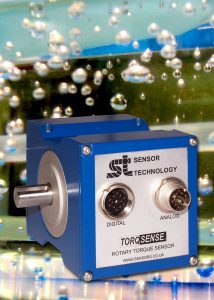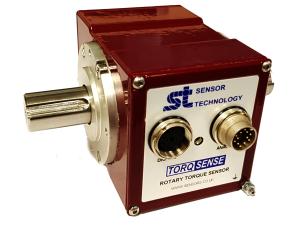A torque sensor is helping analyse recipes’ mixing properties in a project that could slash development costs in the food and plastics industry and help nanotechnology advances in the pharmaceuticals world.
The research and development is being carried out at the University of Bradford by Professor Hadj Benkreira and Dr Raj Patel in collaboration with Dr Martin Gale, formerly of RAPRA Technology (Shawbury) now Visiting Professor. They have been developing a miniature mixer (5-25 grams batch) that incorporates a set of integral instruments to monitor the properties of materials as they are being mixed. The instruments work in real time during the mixing process and their output is captured to a PC for subsequent analysis. Software is being written so that the analysis can be performed simultaneously with the mixing and perhaps even used to interactively control the mixer itself.
 One of the key parameters to be measured is the torque of the mixing element, as this will become constant once mixing is complete. This is measured by a TorqSense non-contact sensor that offers the development team the great advantage of not requiring complex and delicate slip rings, making the mixer easier to build (and rebuild between trials) and far more robust in operation.
One of the key parameters to be measured is the torque of the mixing element, as this will become constant once mixing is complete. This is measured by a TorqSense non-contact sensor that offers the development team the great advantage of not requiring complex and delicate slip rings, making the mixer easier to build (and rebuild between trials) and far more robust in operation.
The Mini Mixer development and validation is the result of a three year EPSRC sponsored programme of research. The results of this research are expected to have a major impact on formulation of viscous mixes and scale-up of extruders.
Traditionally recipes for formulating say specific coloured plastics for consumer products are developed in 25 to 50kg batches, mixed in an industrial scale twin screw compounder. Several batches may be required before the recipe is finalised, so the cost and time involved can be considerable.
Clearly the development of a smaller mixer is advantageous, but the laboratory device must be able to duplicate mixing in the larger scale and guide design and operation of large machines and that is what the research programme has achieved. That fact that the technology will transfer to the plastic industry and other soft solid sectors means it is likely to rapidly recoup development costs.
TorqSense torque sensors, available from Sensor Technology of Banbury, use two tiny ceramic piezoelectric frequency resonating combs otherwise called Surface Acoustic Wave (SAW) devices that are fixed onto the shaft of the torque sensor to measure applied torque. As the torque changes the combs vary their spacing and consequently the resonant frequency of the SAWs changes proportionally to the torque applied in the rotating shaft. In effect the combs are frequency dependent strain gauges that measure changes in resonant frequency of the shaft. A wireless radio frequency (RF) coupling is used to interrogate the SAWs and transfer the data signal to a pick-up head.
The same RF coupling is used to supply power to the SAW devices and because the gauges are based on piezo technology they need less than one milliwatt of power. This arrangement does away completely with the difficulties of fitting slip rings and maintains the measurement quality throughout an extended test run.
TorqSense embraces all the advantages of SAW technology, including no load imparted or extra drag to the drive mechanism under investigation. As it is fundamentally a digital system it has a broader signal bandwidth than other analogue based technologies and electromagnetic interference is eliminated.
Dr Raj Patel explains why he selected TorqSense in preference to a conventional strain gauge based transducer. “In a development project like this you are constantly dismantling and rebuilding the equipment. TorqSense torque sensors saves us considerable time and effort (and therefore cost and frustration) because it is so simple to set up.”
“It will be used in the final commercial design of the mixer too, where its simplicity of use will be much appreciated by busy scientists, engineers and technologists.”





